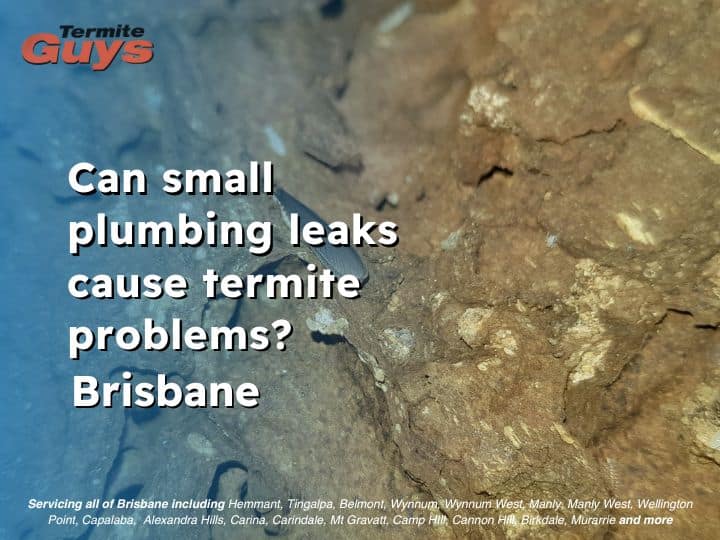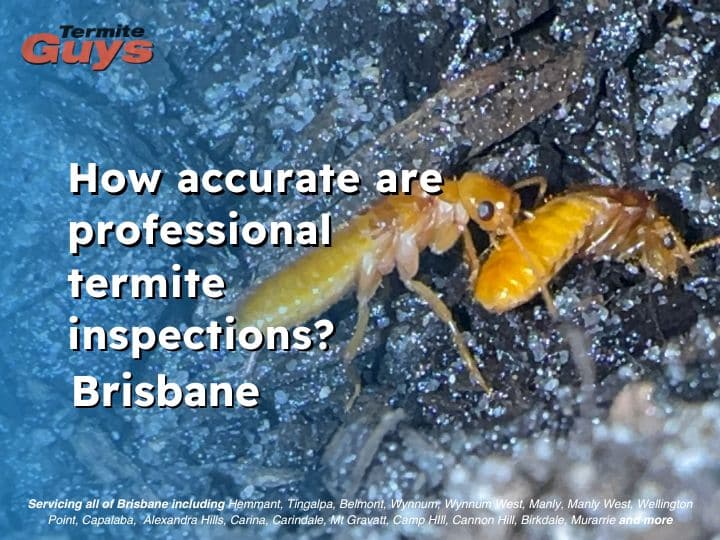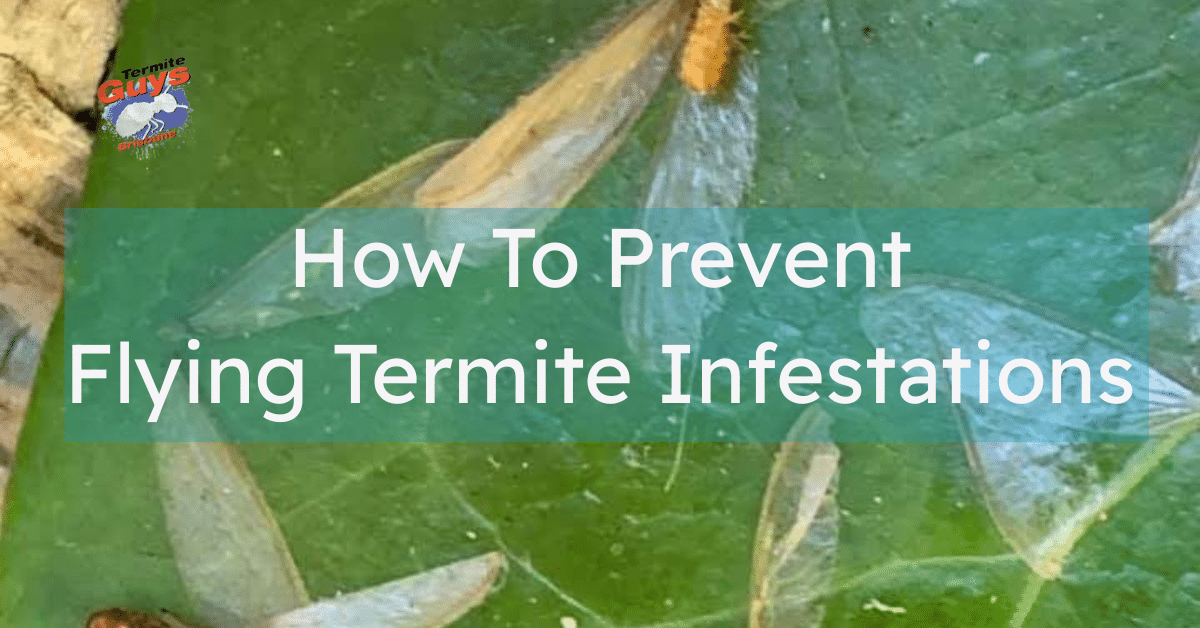Flying termites can turn a peaceful Brisbane evening into a homeowner’s nightmare. These winged invaders signal an active termite colony nearby, ready to expand their destructive reach into your property. Preventing infestations starts long before swarm season, through moisture control, structural maintenance, and installing barriers that repel termites before they strike.
Brisbane’s subtropical climate, with its humid summers and frequent rain showers, creates ideal conditions for flying termites to thrive. That’s why understanding prevention steps – from moisture management to construction-phase protection — is critical to safeguarding your biggest investment: your home. With the right strategies, homeowners can enjoy peace of mind knowing their property stays termite-free year-round.
Why Do Flying Termites Swarm Around Brisbane Homes?
Flying termites, or alates, emerge during warm and humid evenings to establish new colonies. Brisbane’s weather patterns – especially after summer rainfall – trigger these swarms, often around lights and moisture sources. Understanding why they swarm is the first step toward prevention.
When you notice these fliers, they are not a minor inconvenience; they are a warning sign. Each swarm can indicate a mature infestation nearby, possibly within or around your property. Acting early and implementing preventive steps can stop them from settling in.
Flying termites swarm after heavy rain and humidity peaks.
They are reproductive termites seeking new nesting sites.
Swarming often marks mature colonies within 50-100 metres.
Light sources and damp areas attract them.
Detecting swarms early helps target colony origins.
What does it mean when you see flying termites in Brisbane?
Seeing flying termites often means a mature colony exists nearby. Brisbane’s humid climate triggers their mating flight, signalling that now is the time to inspect your property before new colonies form.
What attracts flying termites to homes?
Flying termites are attracted to moist environments, light sources, and untreated timber. Brisbane homes with roof leaks, damp basements, or poor drainage are especially vulnerable during swarm season.
How Does Moisture Control Protect Your Home from Termites?
Termites thrive where there’s consistent moisture. Water leaks, poor ventilation, and damp soil around Brisbane homes create perfect breeding grounds. Keeping your property dry discourages termites from settling near or within your structure.
Homeowners often overlook subtle sources like dripping taps, leaking air conditioners, or downspouts draining toward the slab. Correcting these issues creates a less inviting environment for both subterranean and flying termites.
Repair leaking pipes, roofs, and air conditioning units quickly.
Ensure gutters and downpipes discharge water away from foundations.
Maintain adequate subfloor ventilation.
Use dehumidifiers in moisture-prone areas.
Keep soil and mulch levels below the slab edge.
Do termites need moisture to survive?
Yes. Termites rely on moisture to maintain body temperature and avoid dehydration. Without damp conditions, colonies struggle to thrive, making moisture control one of the most effective preventive measures.
How do I know if my house has moisture attracting termites?
Check for peeling paint, mould spots, or musty smells along baseboards or walls. Termites often colonise where water leaks or condensation persist, especially in bathrooms or around plumbing penetrations.
Can Fixing Water Leaks Stop Future Termite Infestations?
Leaky taps, cracked pipes, and poor drainage may seem harmless but are silent invitations to termites. Persistent leaks increase soil and timber moisture, attracting subterranean species that eventually send out flying termites to start new nests.
Fixing leaks early stops invisible moisture build-up beneath floors or behind walls. In Brisbane’s humid conditions, preventive plumbing maintenance is a cost-effective defence against termite invasions.
Inspect plumbing annually for leaks and corrosion.

Fix dripping taps and leaking hot water systems promptly.
Check outdoor hoses and irrigation systems regularly.
Direct water runoff away from exterior walls.
Install leak alarms in hidden areas like under sinks.
Can small plumbing leaks cause termite problems?
Yes. Even minor drips can build moisture over time, creating conducive environments under floors or behind walls that attract termites looking for damp nesting areas.
Should I get a termite inspection after fixing water leaks?
It’s recommended. An inspection confirms whether existing moisture attracted any termite activity before repairs, ensuring your home remains termite-free moving forward.
How Do Termite Barriers Protect New Brisbane Homes?
When building new homes in Brisbane, integrating termite barriers during construction is one of the smartest long-term defences. These barriers act as invisible shields, blocking or repelling termites before they can enter the structure.
There are two main types: chemical and physical barriers. Chemical barriers use termiticides in the soil, while physical barriers use stainless steel mesh or particle layers to block termite entry points. Installing these before slab pour or during foundational work ensures maximum coverage.
Integrate barriers at the pre-construction stage.
Choose between chemical soil treatments or physical mesh systems.
Ensure certified installers apply barriers to Australian Standards.
Replenish or inspect chemical zones periodically.
Combine barrier installation with good drainage design.
Do new homes in Brisbane require termite barriers?
Yes. Queensland Building Regulations mandate termite management systems for all new homes. These barriers are crucial for long-term protection against subterranean and flying termite threats.
How long do termite barriers last?
Depending on the system, barriers can last 5 to 50 years. Regular inspections ensure barrier integrity and help schedule reapplications for continuous protection.
How Does Regular Maintenance Prevent Termite Damage?
Neglecting small maintenance tasks often leads to significant termite damage. Every bit of decaying wood, loose seal, or soil contact near foundations offers a potential entry point. Regular upkeep and vigilance are your best lines of defence.
Homeowners should schedule annual property checks, including clearing gutters, repairing weatherboards, and sealing wooden joints. Preventive maintenance aligns with Brisbane’s termite-prone climate and protects long-term property value.
Keep weep holes clear of soil and debris.
Repair cracked or broken exterior finishes.
Trim trees and shrubs away from walls.
Avoid timber-to-soil contact near the house.
Inspect decks and fences for early decay signs.
How often should I schedule termite checks in Brisbane?
Experts recommend at least one professional inspection annually. Brisbane’s humid conditions can accelerate termite activity, making yearly inspections essential for prevention.
Can DIY maintenance help stop termites?
Yes, but it’s not enough alone. Regular cleaning, sealing, and drainage control reduce risks, though professional inspections ensure hidden infestations are uncovered early.
Can Habitat Modification Reduce Termite Risk Around Brisbane Homes?
Termite-prone habitats often include gardens with mulch, stacked firewood, and shaded moisture zones. Modifying these elements can drastically reduce the likelihood of termite colonisation in Brisbane’s backyards.
By keeping the environment uninviting – removing cellulose debris, choosing termite-resistant landscaping materials, and ensuring proper yard drainage – homeowners can maintain termite-free outdoor areas that prevent colony expansion.
Store firewood away from house foundations.
Use gravel or stone mulch instead of organic mulch near the home.
Keep garden beds below slab level.
Prune overgrown vegetation to improve airflow.
Dispose of old timber and stumps promptly.
Does garden design affect termite infestations?
Yes. Gardens with excessive mulch or rotting wood can attract termites. Choosing termite-resistant plants and materials near structures greatly reduces infestation risk.
Can removing old tree stumps help prevent termites?
Absolutely. Termites often nest in decayed tree roots and stumps. Removing them eliminates shelter and moisture sources, reducing nearby colony activity.
Why Are Professional Termite Inspections Essential in Brisbane?
Even with excellent maintenance habits, termites remain unpredictable. Professional inspections by licensed technicians bring expertise, equipment, and detection technology that homeowners lack. Early detection prevents structural damage and costly repairs.
Brisbane’s geography – clay soils, humidity, and active subterranean species – demands thorough, recurring inspections every 6–12 months. Partnering with trusted specialists ensures your protection plan adapts to changing local conditions.
Schedule biannual inspections for high-risk zones.

Request detailed inspection reports with photos.
Combine inspections with soil moisture assessments.
Use companies that provide integrated prevention and treatment.
Follow recommendations immediately to avoid escalation.
How accurate are professional termite inspections?
Very. Advanced tools like moisture meters and thermal imaging help technicians detect hidden termite activity before visible damage appears.
Should Brisbane homeowners get inspections even with barriers installed?
Yes. Barriers reduce risk but don’t guarantee immunity. Regular inspections verify that your system remains intact and functioning as intended.
What Should You Do If You Spot Flying Termites Indoors?
If flying termites suddenly appear inside your Brisbane home, act immediately. Their presence indicates an internal nest or a nearby entry point. Avoid disturbing them or spraying household insecticides, as it can scatter the colony further.
Instead, document the infestation and contact a licensed termite specialist. Prompt professional intervention prevents severe structural damage and protects your home before termites settle deeper into walls or floors.
Collect dead insects for identification.
Avoid vacuuming or sweeping them right away.
Close windows at night to block entry during swarming season.
Schedule a same-day termite inspection.
Request an inspection of roof voids, walls, and garden surroundings.
What do indoor flying termites mean?
They often indicate a hidden indoor nest. Seeing them inside suggests termites have already infiltrated your structure and begun expanding colonies from within walls or flooring.
Should I spray flying termites myself?
No. DIY sprays kill visible termites but leave the colony untouched, allowing it to relocate. Always contact licensed professionals for targeted elimination and follow-up prevention advice.
Summary
Understanding how to prevent flying termite infestations in Brisbane starts with controlling moisture, fixing leaks, maintaining properties, and installing effective barriers. Termite Guys Brisbane provides expert inspections and barrier installations tailored for Brisbane homes, ensuring long-term protection from termite threats.
FAQs
1. When do flying termites appear in Brisbane?
Flying termites typically emerge between October and March, during humid evenings after rainfall, when conditions favour colony expansion.
2. Can Brisbane’s weather increase termite risk?
Yes. High humidity, rain, and warm temperatures create ideal breeding conditions for both subterranean and flying termites.
3. How often should I inspect my home for termites?
At least once a year. Homes near bushland, water, or with untreated timber should consider inspections every six months.
4. Are termite barriers safe for families and pets?
Modern systems are designed using regulated chemicals or physical materials safe for humans and animals when professionally installed.
5. What’s the best prevention method for older Brisbane homes?
A combination of moisture management, structural maintenance, and professionally installed perimeter barriers offers the strongest long-term defence.


